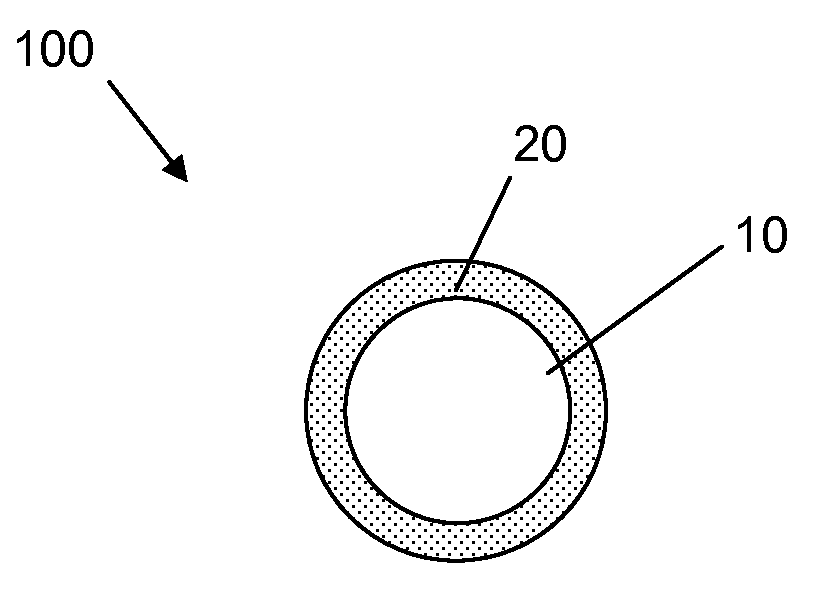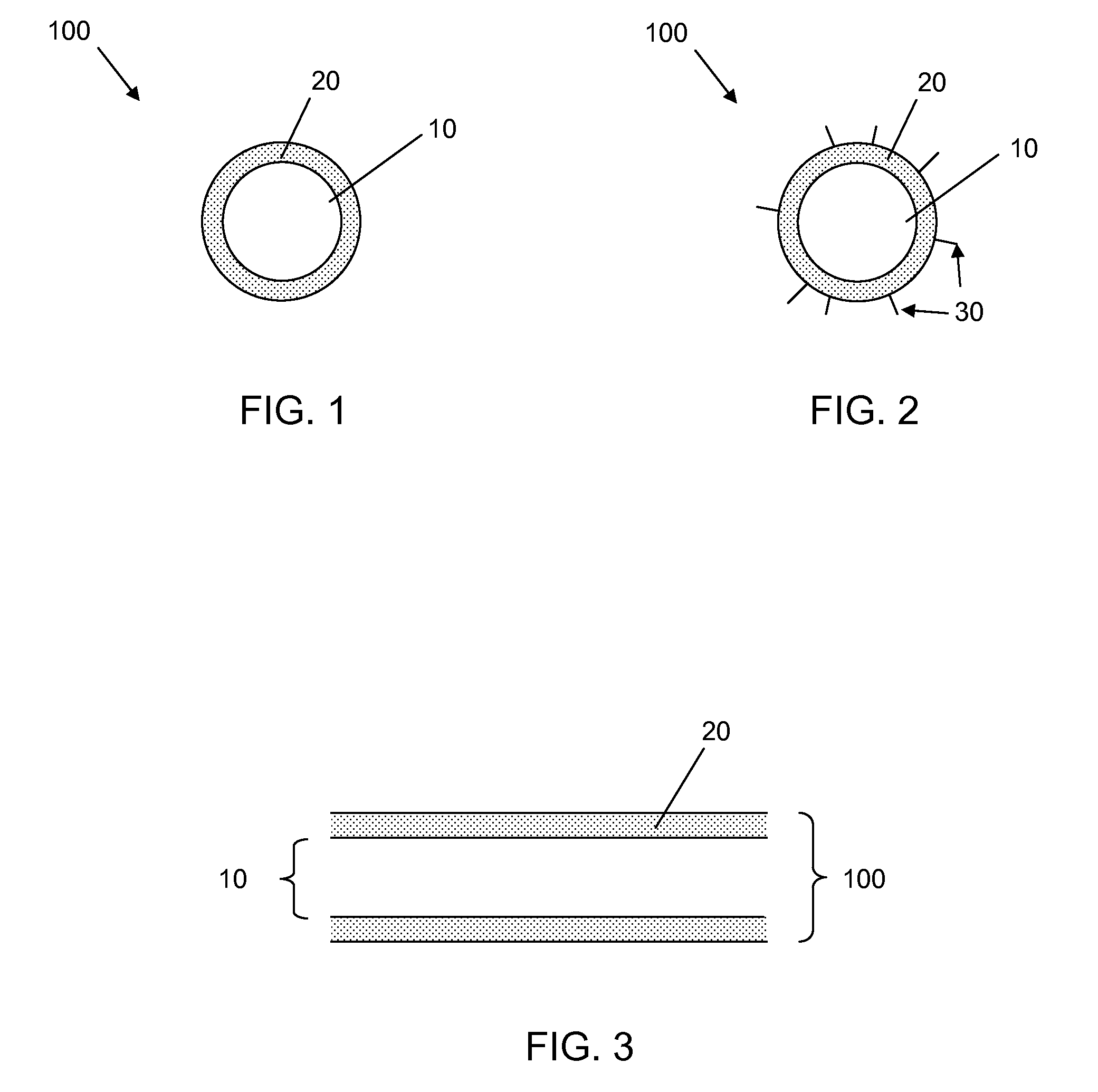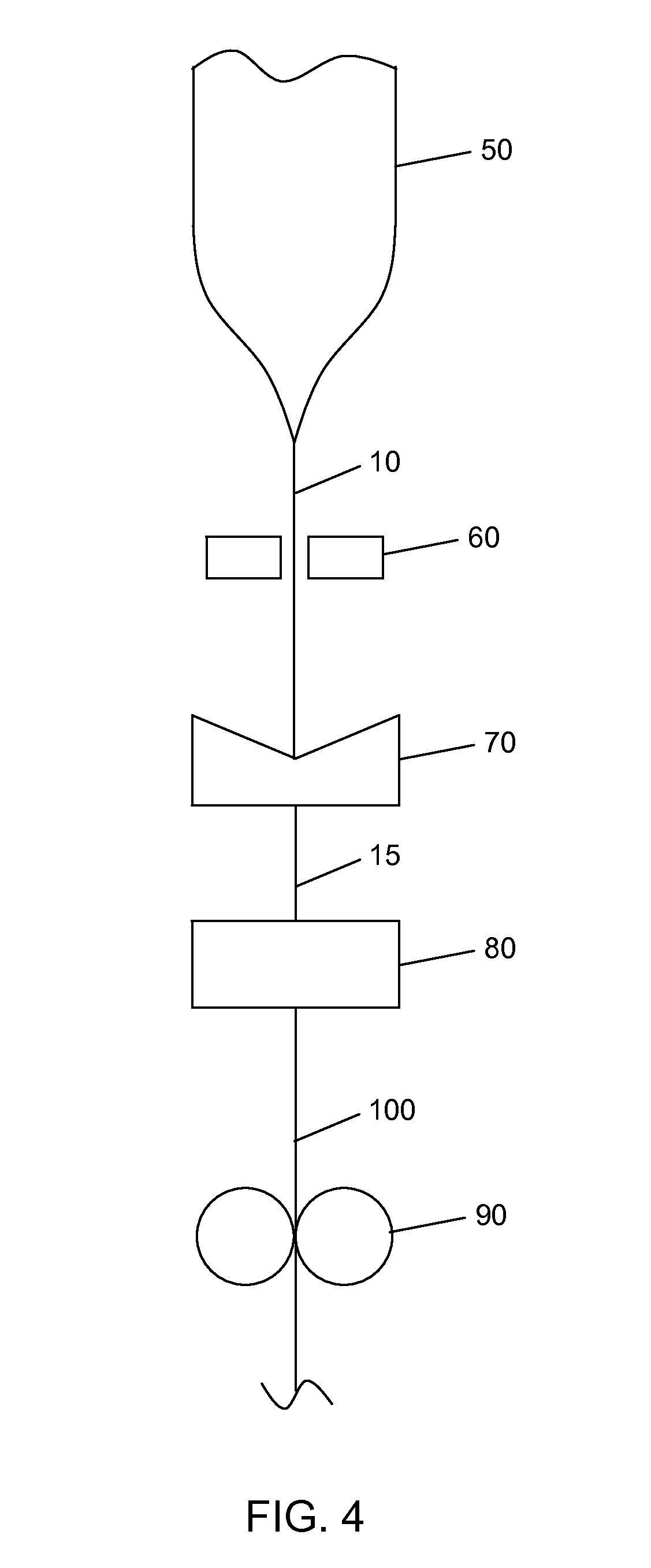Coated Fibers for Culturing Cells
a technology of coated fibers and cells, applied in the field of cell culture, can solve the problems of microcarriers having difficulties in their use, difficult separation from the medium, excessive curvature, etc., and achieve the effects of improving coating uniformity, coating thickness control, and low cos
- Summary
- Abstract
- Description
- Claims
- Application Information
AI Technical Summary
Benefits of technology
Problems solved by technology
Method used
Image
Examples
example 1
[0092]A variety of coatings suitable for cell culture were applied to the exterior surfaces of optical fibers. Briefly, the fibers with an outer diameter of 245 micrometers were coated with a compositions having components are indicated in Table 2, where Irgacure 819 is Bis(2,4,6-trimethylbenzoyl)-phenylphosphineoxide, and Irgacure 184 is 1-Hydroxycyclohexyl phenylketone.
TABLE 2Coating CompositionsWeight PercentComponentExample 1Example 2Example 32-Hydroxyethyl776020methacrylate2-Carboxyethyl202020acrylateTriethyleneglycol32060diacrylateIrgacure 8191.5 pph1.5 pph1.5 pphIrgacure 1841.5 pph1.5 pph1.5 pph
[0093]To produce the coating compositions in Table 2, the appropriate amount of each monomer and initiator was weighed into a jacketed beaker and heated to 70° C. followed by mixing until the photoinitiators were completely dissolved.
[0094]The coatings were applied to an optical fiber using an optical fiber draw. Using compositions prepared as described in Table...
example 2
Crystal Violet Staining to Verify Fiber was Coated
[0095]Crystal violet staining was used to verify that the fibers of EXAMPLE 1 were coated. Briefly, a small sample of coated fiber was placed in a solution of 2 mL centrifuge tube. 500 μL of a 1:5 dilution of crystal violet blue in water was added to the centrifuge tube. After 5 minutes, the sample was aspiration washed with DI water or until top solution was clear and colorless. Staining of the fiber was assessed using a light microscope. A fiber with no coating was also exposed to the crystal violet stain as a negative control. Representative images are shown in FIG. 5, where an uncoated fiber is shown in FIG. 5A, and a coated fiber is shown in FIG. 5B. The presence of the coating is confirmed by the crystal violet staining.
example 3
Conjugation of Polypeptide to Coating
[0096]A vitrotronectin polypeptide (LysGlyGlyProGlnValThrArgGlyAspValPheThrMetPro (SEQ ID NO:5)) was conjugated to the surface of the coated fibers produced according to EXAMPLE 1. Briefly, 50 mg of coated fiber (250 micron outer diameter) was transferred to a 2 mL centrifuge tube. 94 mg of EDC (12 equiv, 191.70 g / mol, 492 μmol) and 14 mg NHS (3 equiv, 115 g / mol, 123 μmol) was dissolved in 1.5 mL of DMF and added to the fiber and allowed to mix on an orbital shaker for 60 min. The solution was aspirated, rinsed once with DMF, aspirated and then 1 mL of vitronectin peptide solution (10 mM in borate buffer, pH 9.2, 0.25% Rhodamine peptide spiked) was added and allowed mix for 60 min. The peptide solution was removed by aspiration and the fibers were treated with 1.5 mL of 1M ethanolamine pH 8 for 10 min followed by washing with PBS (1.5 mL×5), 1% SDS (1×1.5 mL×1.5 min), and DI Water and ethanol (1.5 mL×5) and dried under a gentle stream of nitrogen...
PUM
| Property | Measurement | Unit |
|---|---|---|
| diameter | aaaaa | aaaaa |
| molecular weight | aaaaa | aaaaa |
| molecular weight | aaaaa | aaaaa |
Abstract
Description
Claims
Application Information
 Login to View More
Login to View More - R&D
- Intellectual Property
- Life Sciences
- Materials
- Tech Scout
- Unparalleled Data Quality
- Higher Quality Content
- 60% Fewer Hallucinations
Browse by: Latest US Patents, China's latest patents, Technical Efficacy Thesaurus, Application Domain, Technology Topic, Popular Technical Reports.
© 2025 PatSnap. All rights reserved.Legal|Privacy policy|Modern Slavery Act Transparency Statement|Sitemap|About US| Contact US: help@patsnap.com



